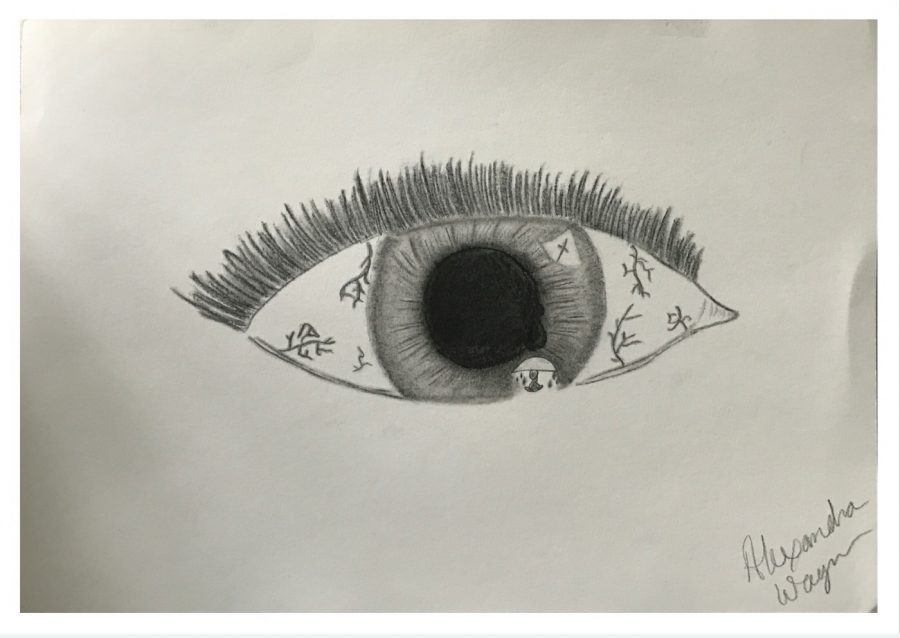Moving On From 2020 Vision: How Has The Pandemic Affected Our Eyesight?
February 12, 2021
Before the pandemic, the number of people needing corrective lenses was expected to double from 2010 to 2050. However, this rate of increase may be accelerating due to COVID-19. Why is this the case?
Dr. Aaron Mjelstad, an ophthalmologist at Excelsior Eye Care, said the two primary reasons for needing corrective lenses are genetics and environmental factors.
He said, “If genetics influence eyesight, we usually see children around second grade needing glasses, but if the child makes it all the way through elementary, middle, and high school, we can assume the need for corrective lenses is due to environmental reasons.”
These environmental reasons include increased phone use and studying, which can ultimately lead to myopia (nearsightedness), the more common optical condition over hyperopia (farsightedness). Mjelstad explained that as people spend increasingly more time focusing on objects in the dark or right in front of their face, the eyeball elongates to compensate for the lack of light entering the eye. Since the new normal has shifted from in-person interaction to online, Mjelstad asserted that this significant environmental shift has had a large impact on people’s eye health.
One reason why people’s eye health may deteriorate is because of minimal blinking, a result of intense concentration on anything directly in front of one’s face or any type of electronics. This can result in a condition called dry eye, which causes a near 66% decrease in blinking. This equates to around 15-20 times per minute to 4-7 times per minute. By not blinking, tears and lubricants in the eye are reduced, potentially damaging the epithelial cells that protect the surface of the cornea from viruses and infections. To make up for the tear deficit, some begin blinking more frequently, but this has little effect on eye health, especially if the condition has become chronic because the eye once again adjusts, leading to a loss of lubrication in a shorter amount of time. Dry eyes could consequently result in loss of sight, and, in theory, could increase the likelihood of contracting coronavirus.
For high-schoolers and young adults alike, glasses don’t always have the same appeal as contact lenses. People new to corrective lenses especially want to try invisible versions, such as contact lenses, to maintain the same outward appearance. Even though it is suggested by most ophthalmologists that new clients wait for approximately a year to wear contacts to adjust to the onset of vision loss, it is becoming increasingly common for eye doctors to suggest glasses for people at any point after their diagnosis.
As previously mentioned, eyes adjust to their environment and what they have adapted to in the past. Because of this, Mjelstad stated that it is important to only wear corrective lenses for which they are prescribed.
He said, “If you are farsighted, it’s still important to remove your glasses when you are doing homework or doing anything up close. That way, you are maintaining your current vision, rather than letting your eyes adjust to the higher prescription in the same way they did initially, requiring even further correction.”
Accordingly, glasses seem like the better option than contact lenses, according to Mjelstad.
“Glasses are easy to take on and off, whereas contacts take time and patience to put in. Nobody wants to insert and remove their contacts regularly to maintain their current vision, especially since touching the eye allows for the introduction of germs to the eye, right now most importantly the coronavirus. Because of this, it is much more safe and time effective to stick to glasses.”
However, one issue arises. Although more people are developing a need for glasses, few are actually going in for exams and glasses fittings, knowing that a primary method of contracting the virus is through the eyes. By not prioritizing getting new glasses, there is a higher risk of further eye damage, and, in the case of severe eye conditions, this can be a large risk. Healthcare workers say it is essential to keep comprehensive eye exams in place, as many eye conditions go unnoticed. If someone is uncomfortable being in a public place, he or she could call ahead to identify a time where the store is minimally busy; this way, he or she can get in and out in a short period of time with little interaction with others.
For many, it is nearly impossible to do anything away from a screen these days. In this case, professionals suggest for every twenty minutes in front of a screen, take twenty seconds to look at something twenty feet away in order to prevent eye strain and reduce the chance of further vision reduction. By using this suggestion and upholding recommendations for corrective lens use, healthy eyes can be much easier to maintain.






























